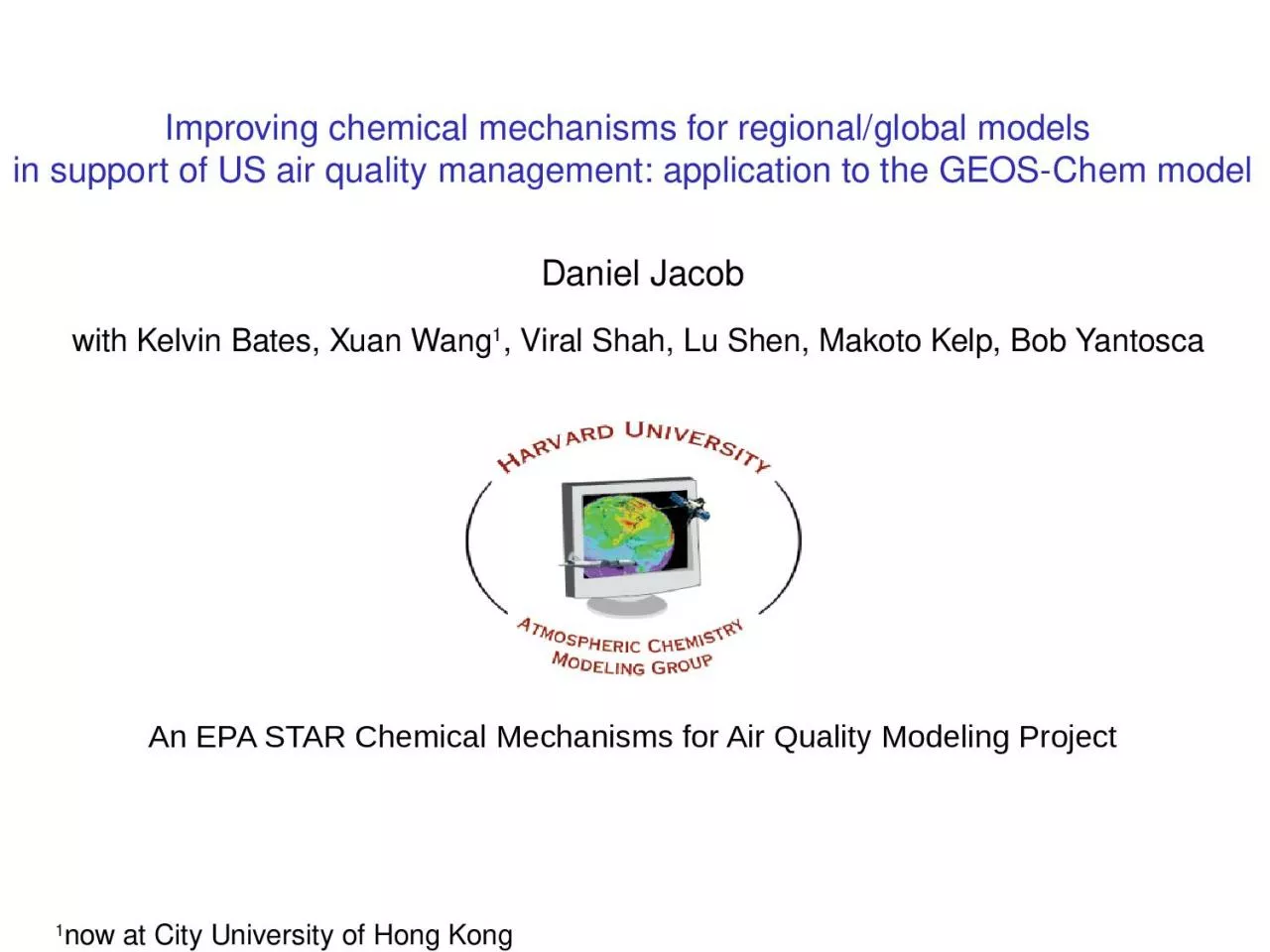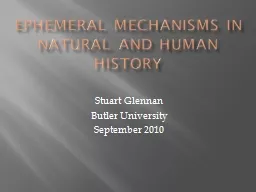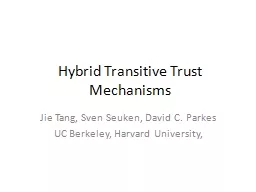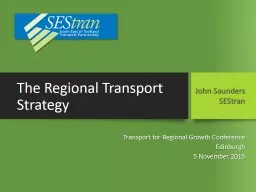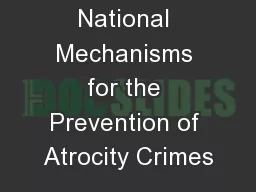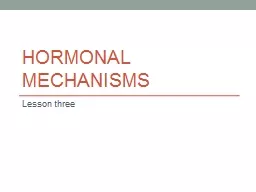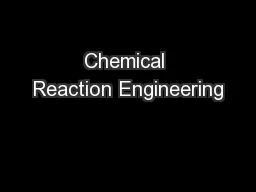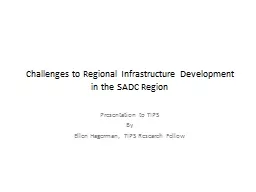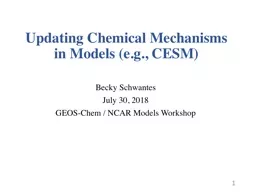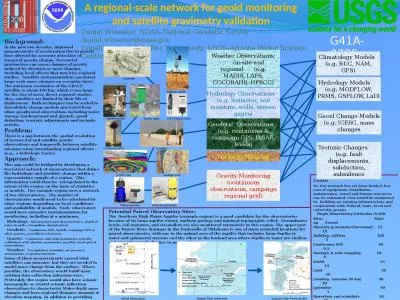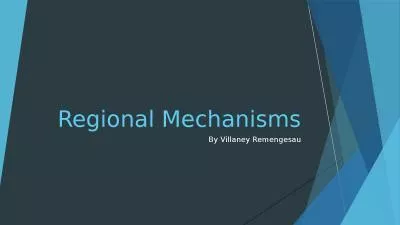PPT-Improving chemical mechanisms for regional/global models
Author : piper | Published Date : 2024-03-15
in support of US air quality management application to the GEOSChem model Daniel Jacob with Kelvin Bates Xuan Wang 1 Viral Shah Lu Shen Makoto Kelp Bob Yantosca
Presentation Embed Code
Download Presentation
Download Presentation The PPT/PDF document "Improving chemical mechanisms for region..." is the property of its rightful owner. Permission is granted to download and print the materials on this website for personal, non-commercial use only, and to display it on your personal computer provided you do not modify the materials and that you retain all copyright notices contained in the materials. By downloading content from our website, you accept the terms of this agreement.
Improving chemical mechanisms for regional/global models: Transcript
Download Rules Of Document
"Improving chemical mechanisms for regional/global models"The content belongs to its owner. You may download and print it for personal use, without modification, and keep all copyright notices. By downloading, you agree to these terms.
Related Documents

